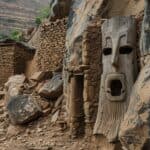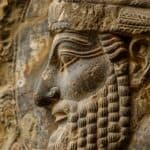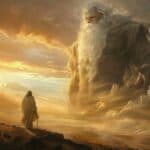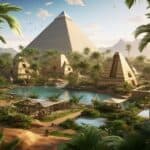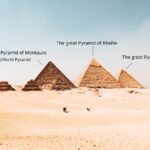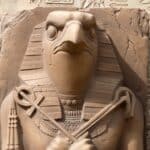Sarah witnessed the destruction caused by tidal waves from an explosion in Atlantis.

Atlantis and the Creation of Races
Elohim, as architects, created life in the universe starting from the sixth dimension, representing the pattern of life.

Thoth’s arrival in Khem
Thoth and his companions arrived in Khem after the fall of Atlantis. This period marked a time of confusion and fear among the locals, as they were unaccustomed to the advanced energies and wisdom that Thoth

Thoth and Ra
Ra, another Blue Avian, played a role in amplifying the sun’s light codes to aid in human awakening and consciousness expansion.
The Dogon Tribe have detailed knowledge of the Sirius star system, including Sirius A and its invisible companion Sirius B.
Ancient symbols date back 60,000 years and show a sophisticated understanding of nature.
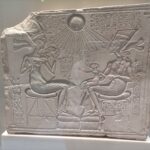
People of Atlantis were not human
The people of Atlantis were not human. They came from various star systems and were part of an effort to cultivate and help the planet.
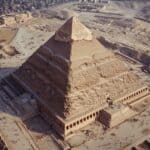
Pyramid of Giza
The layout of the pyramids is believed to reflect the positions of the stars in Orion’s Belt, with alignments dating back to 10,450 BC
The Essenes believed in the existence of celestial beings, or Watchers, who guided them in transforming human flesh into celestial forms.
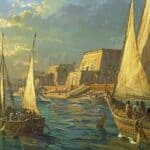
The Hyksos Expulsion
The Hyksos, whose name is often translated as “rulers of foreign lands,” were Semitic people who originated from the Levant.
Yahwistic Religion refers to the worship and religious practices centered around Yahweh, the national god of ancient Israel and Judah
Parallels between the Exodus narrative, particularly the figure of Moses, and elements of Egyptian history and mythology

The 7th Human Civilization
Cycle of creation and destruction orchestrated by the “Illojim,” with each civilization reaching a certain level of development before being eradicated for unknown reasons.

Pre-dynastic Rulers
Pre-dynastic Rulers refers to the period in ancient Egyptian history before the 1st dynasty and after the ruler Horus.
The First Dynasty and some parts of the Pre-Dynastic period, often referred to as the “Mythical Period” or the “Time of the Gods” and “Demigods.”

Account of Menes
Menes instructed the people in the worship of the gods and in the practice of living together in cities.
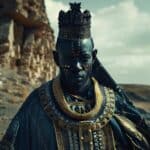
Manetho’s King Lists
Manetho divided the rulers of Egypt into 30 (or sometimes 31) dynasties, beginning with the semi-mythical First Dynasty and extending to the conquest of Egypt by Alexander the Great.
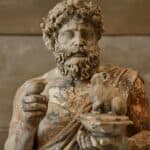
Account of Sethos
In gratitude for the divine intervention, Sethos is said to have erected a statue of himself holding a mouse

Account of Cheops
Herodotus describes Cheops (also known as Khufu) and his building of the Great Pyramid in Book 2, Chapter 124-127 of “Histories”
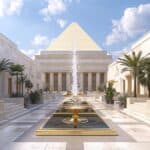
Ancient Egypt – 11,800 BCE
Herodotus, the ancient Greek historian, wrote that Egyptian history spanned over 11,340 years before his own time. This assertion is found in his work Histories

Atlantis’ Readings
Thus I recreated in Greece all the best from the culture of Atlantis — hoping to preserve it in the memory of people on the Earth for many centuries.
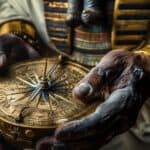
The antiquity of some of our great inventions
In ancient Sanskrit, the magnet was known as “the precious stone beloved of Iron,” and early Hebrew texts refer to it as Kalamitah.

Artificial Deformation of the Skull
The practice of artificially deforming the skull was prevalent among various ancient civilizations on both sides of the Atlantic Ocean.

Couvade
Couvade ([kuvad]) is a term coined by anthropologist Edward Burnett Tylor in 1865. It refers to rituals in various cultures that fathers adopt during pregnancy.
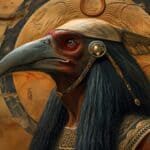
Thoth
Thoth is a key player in human civilization. He appears many times through different reincarnations. Thoth is key to understanding our history.
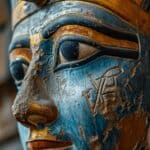
Ptah
Ptah was often depicted as a creator god who fashioned the world through his thoughts and words.

The Sphinx
Over the spaceship, erected a marker in the form of a lion yet like unto man.
Fast we fled toward the sun of the morning, until beneath us lay the land of the children of Khem. Raging, they came with cudgels and spears lifted in anger seeking to slay and utterly destroy the Sons of Atlantis.
The Red Pyramid, also known as the North Pyramid, is the fertilizer factory.
Ancient Egypt had a rich and complex relationship with the stars, which played a significant role in their mythology, religion, and culture.

